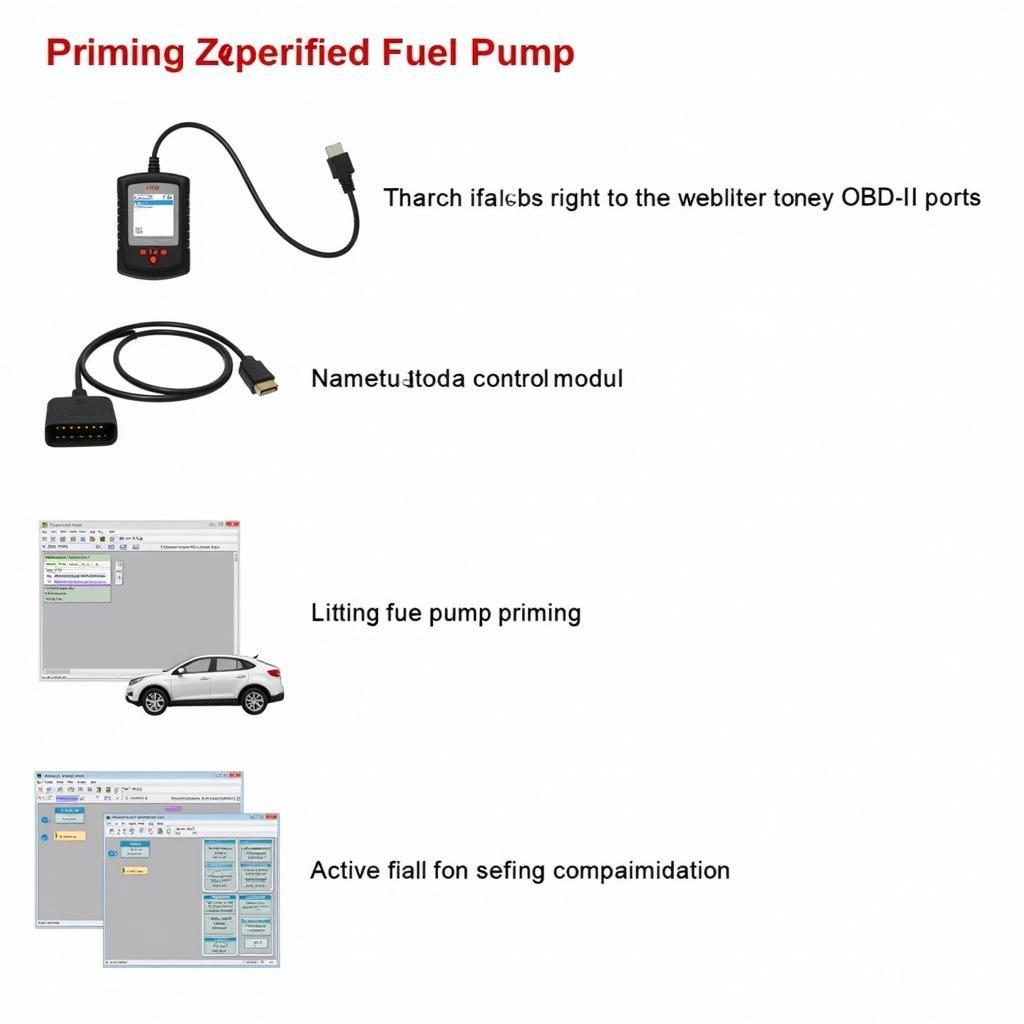Boost leaks can be a real headache for any car owner, robbing your engine of power and efficiency. But can VCDS (Vag-Com Diagnostic System), a powerful diagnostic tool for Volkswagen, Audi, Seat, and Skoda vehicles, actually pinpoint these elusive leaks? The short answer is: indirectly. While VCDS can’t visually show you the exact location of a boost leak like a magic wand, it can provide crucial data that helps you track it down.
Many drivers wonder if they can use VCDS to diagnose boost leaks. You can’t directly see a leak, but you can utilize the data VCDS provides to identify the symptoms. This includes comparing specified boost pressure against actual boost pressure, identifying discrepancies that point towards a leak. Monitoring other parameters, such as MAF (Mass Air Flow) sensor readings, can also offer valuable clues. Understanding how to interpret this data is key to effectively diagnosing a boost leak using VCDS.
Using VCDS to Diagnose Boost Leak Symptoms
VCDS offers a wealth of information through its various measuring blocks. By accessing the correct measuring blocks for your specific engine, you can monitor actual boost pressure versus specified boost pressure. A significant deviation between these two values, particularly under load, can be a strong indicator of a boost leak. For example, if your specified boost is 20 psi but VCDS shows you’re only achieving 15 psi, you likely have a leak somewhere in your boost system. Check out our guide on vcds boost measuring block for more information.
Additionally, keep an eye on your MAF sensor readings. A lower than expected MAF reading can also suggest a boost leak, as less air is entering the engine than expected. This, combined with low boost pressure readings, reinforces the possibility of a leak. VCDS can also help identify other related fault codes, like the dreaded vcds p0299 (underboost), further supporting your diagnosis.
Pinpointing the Leak with VCDS Data
While VCDS can’t visually locate the leak, the data it provides gives you a starting point. A large pressure drop suggests a significant leak, perhaps in a major component like an intercooler pipe or hose. A smaller pressure drop might indicate a smaller leak, possibly in a vacuum line or a failing diverter valve. Using a vcds graph of your boost pressure can help visualize the issue and its severity.
“When diagnosing boost leaks with VCDS, remember that it’s a tool to guide you, not a magic bullet,” says John Miller, a seasoned automotive diagnostician with over 20 years of experience. “You’ll still need to combine the data with a thorough visual inspection of your boost system.”
Other Helpful VCDS Features for Boost Leak Diagnosis
Beyond measuring blocks, VCDS offers other features that can aid in your boost leak investigation. Logging data over time can reveal patterns and trends in boost pressure fluctuations. This can be particularly helpful in identifying intermittent leaks. Furthermore, checking for related fault codes, like the 02438 vcds code, can provide additional clues about the underlying issue. Monitoring vcds turbo pressure can also be useful in certain situations.
“Don’t underestimate the power of logging data with VCDS,” advises Sarah Chen, an automotive engineer specializing in diagnostics. “It can reveal subtle variations in boost pressure that might be missed during a static test.”
Conclusion: VCDS, a Valuable Tool in the Fight Against Boost Leaks
While VCDS can’t directly “see” a boost leak, it equips you with the data necessary to effectively diagnose and pinpoint its likely location. By understanding how to interpret boost pressure readings, MAF sensor data, and related fault codes, you can use VCDS as a powerful ally in your quest to restore your engine’s performance. So, if you suspect a boost leak, grab your VCDS and start investigating! It’s a valuable tool that can save you time and money in the long run.
FAQ
- Can VCDS show the exact location of a boost leak? No, it can’t pinpoint the exact location visually, but it provides data to help you find it.
- What VCDS measuring blocks should I check for boost leaks? This depends on your specific engine, consult your vehicle’s documentation.
- What other data can VCDS provide that is helpful in diagnosing boost leaks? MAF sensor readings, logged data, and related fault codes.
- Is VCDS the only tool I need to diagnose a boost leak? While VCDS is helpful, a physical inspection is still crucial.
- What should I do if I suspect a boost leak? Use VCDS to gather data and then perform a thorough visual inspection of your boost system.
Possible related issues and questions: How to interpret boost pressure readings in VCDS, Troubleshooting common boost leak locations, Using a smoke test to confirm a boost leak. For further assistance, contact us via Whatsapp: +1 (641) 206-8880, Email: CARDIAGTECH[email protected] or visit us at 276 Reock St, City of Orange, NJ 07050, United States. Our customer support team is available 24/7.

